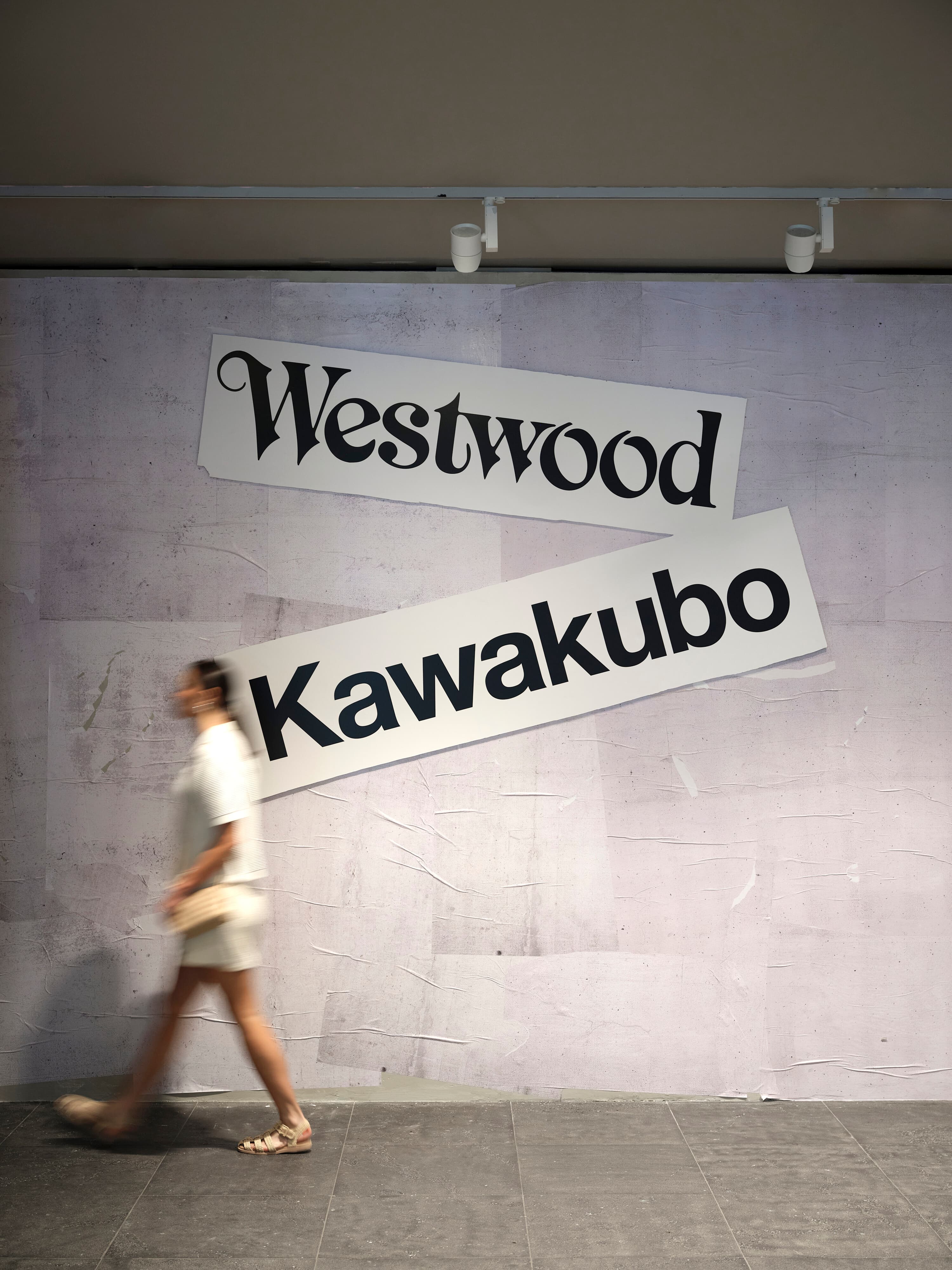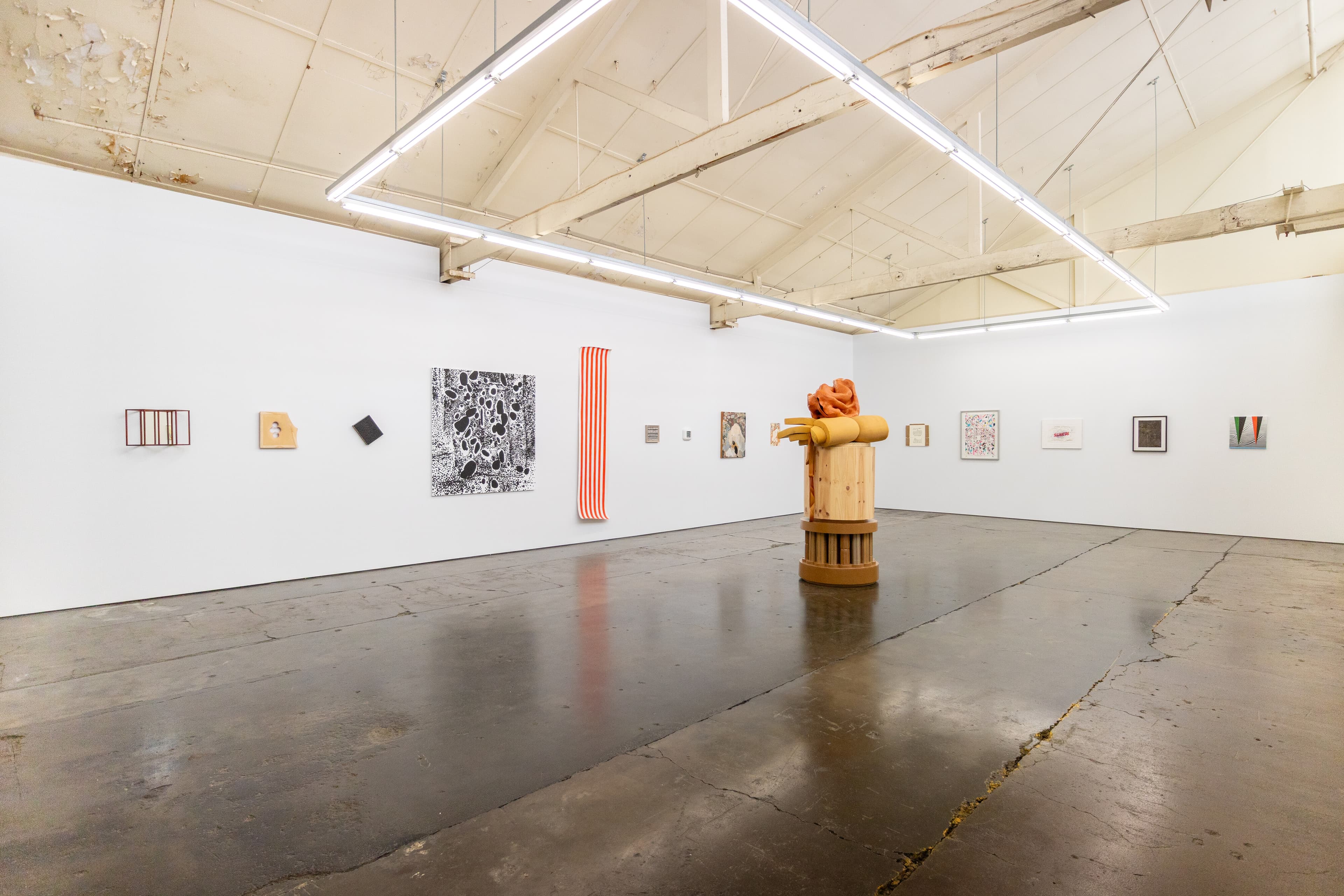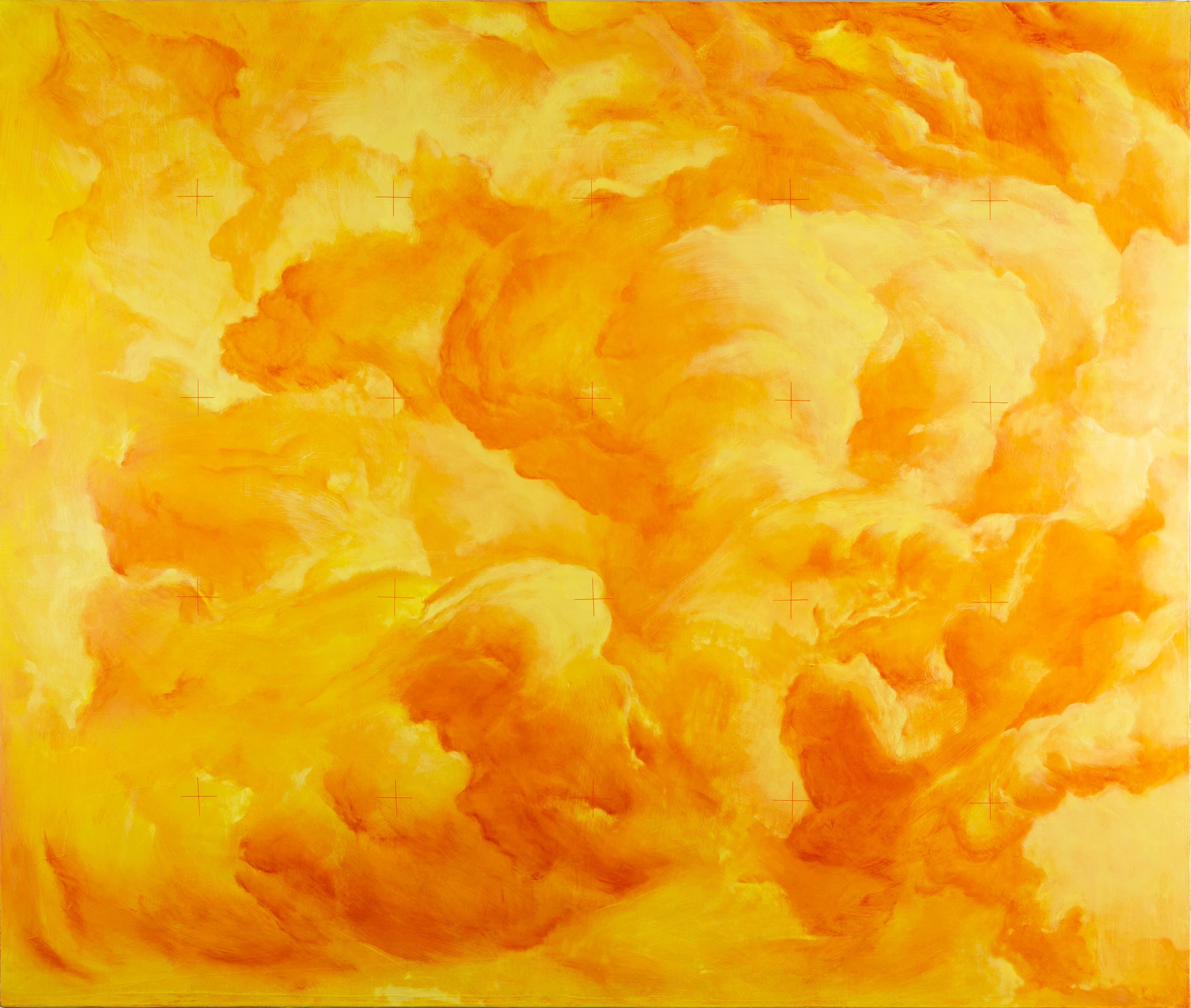Refik Anadol, Quantum Memories
Philip Brophy
One of the worst things about the COVID-19 pandemic (apart from even typing those words) is the empowerment so many people felt in commenting on their baptismal dip into that great ontological swamp of representation: screen culture. Streamed gigs with visuals on par with watching a special indie section of Rage music videos in 1999. Opening paragraphs pithily pointing out the uncanny connectivity of a Zoom call—on par with your grandparents opening a YouTube link for the first time. And maybe the worst: galleries keeping the flame of art alive by porting their agitating discontents online—to be viewed by art-types who have Instagram accounts but couldn’t tell you the difference between CSS and HTML-5.
This voiding nexus of visual art professionals and their grasp of the broader techno-cultural spread of screen culture is not all that new. Post-Conceptual art (date that where you want: j’accuse Fluxus!) welcomed the amateur, the provocateur, the disturber, the anarchist, the clown and the rebel to commandeer the “white cube” (typed with inflated perspicacity) and conduct a form of “squatter research”. He or she could analyse, denounce and transform the outside world with poetic impunity due to having been invited into the gallery space in the first place. The presentism of Art is congested by this legacy of immaterial commentary born of the empowerment of ignoring the specificity not only of one’s materials but also of the very subjects being addressed by their handling. I’m not concerned with how painting, sculpture and installation continue to theatricalise this legacy for the sake of contemporaneity in art. Even when they completely contradict themselves or even when they display profound ignorance in what they’re doing, the resulting art can still be fascinating (hence the ongoing need for amoral critical re-orientation, which can only be a good thing).
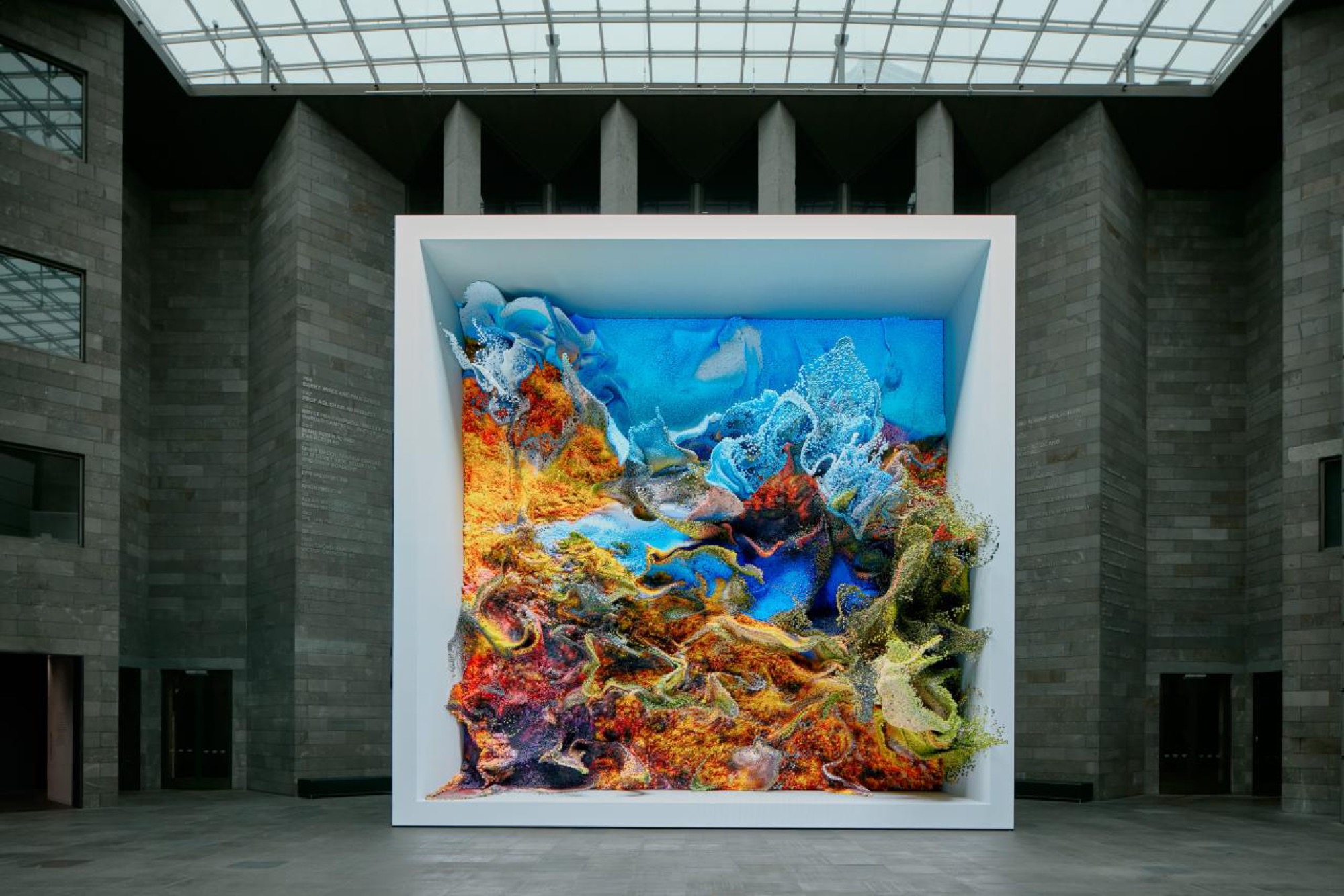
But the inverse is true of screen-based arts. Every time a post-internet artist (read: feigning slacker) or a video artist (read: delusional cineaste) “deliberately” quotes cinema or employs pull-down menu effects, templated animation forms, third-party image-sourcing and other software or platform–shaped methods of visualisation, the outcomes are flatter than a twentieth-century Clement Greenberg could ever have imagined and fatter than a nineteenth-century Hans Makart could ever have staged. Screen-based art at once believes it speaks with the power of a culture’s visual breadth, the scope of its penetration and the ubiquity of its semiotic dispersion. It also believes itself to be the Great Disruptor, obliterating the “white cube“ and its phenomenal aura, transforming the visual experience into something more expansive. Cinema, television, advertising, gaming and motion graphics—these extant fields are subsumed into the messianic rhetoric of the contemporary artist taking on screen culture.
Fourth paragraph in, a screen artwork is caught in this review’s critical aim. Refik Anadol’s Quantum Memories (2020) is a massive singular screen of ultra-hi-res CGI graphics swirling non-stop plumes, flurries and eddies of multicoloured ejaculative beads. Predictably, everything I say will be negative. But don’t worry. This review is utterly powerless in competing with the work’s art-techno confluence in the screen culture swamp. In fact, it’s possible I shouldn’t even bother writing this (I mulled over it until the exhibition was over—hence this “acontemporary” écriture). Everything you need to know about it will be in single sentence FOMO-retweets and Facebook OMG-postings. Everyone simply loved it. State politicians stood in front of it (like every moron in Melbourne) to have their photo taken. The NGV website has a short promo discussing its curatorial purchase and placement. But do you think I could find anyone anywhere critically engage with this work, short of reprising the NGV’s sound-bytes or Anadol’s own assertions? Am I second-guessing that most MeMO readers saw it, hated it and can’t bring themselves to even remember it? Maybe therein lies the core of the problem: how screen culture’s increasing leakage of totemic and monumental art commissions constitutes a critical drowning-out of discursive engagement. To even talk about such works seems futile, unwarranted, exhausting, unexciting.
What is the work exactly? According to the NGV website, it is Refik Anadol’s—
most technically and conceptually ambitious work to date … (which) … explores the opportunities presented by artificial intelligence (AI), machine learning and quantum computing to visualise an everchanging large-scale immersive multimedia artwork. Harnessing a dataset drawn from over two hundred million images linked to nature from publicly available internet resources and processed using quantum computing with machine learning algorithms, Anadol’s work uses the data to speculate an alternate dimension of the natural world as a complex cultural entity with memory. The first true quantum artwork created, Anadol’s arresting visuals and accompanying audio are composed in collaboration with a generative algorithm enabled by AI. In taking the data that flows around us as his primary material and the neural network of a quantum mind as his collaborator, Anadol paints with a thinking brush offering us radical visualisations of our digitised memories of the natural realm.
I term this dicraptic writing. It’s all bluff, fluff and tuff—like a Glam WWE wrestler with the mic at the start of the match, just after his pyrotechnic entrance. But that’s what this work is like: a Zeusian box of delights that has been beamed down into the NGV forecourt in a ginormous screenic white-cube-box. It should have been reviewed on The Footy Show as a fucking big piece of art. It’s like a portal to its alternate reality (apparently the Google-algorithmicised world) posing as both contra-gallery and post-artwork. It ticks every box of fluidity in Fluxus dreaming: constantly evolving, reshaping, transforming. It’s authorless yet vociferous; overpowering yet soothing; maximal yet entrancing. It’s Greenberg and Makart simultaneously: as flat and hi-res as the Harvey Norman big screen in your house, and as fat and engorged as every nano-second of visuality on every screen surrounding your everyday life.
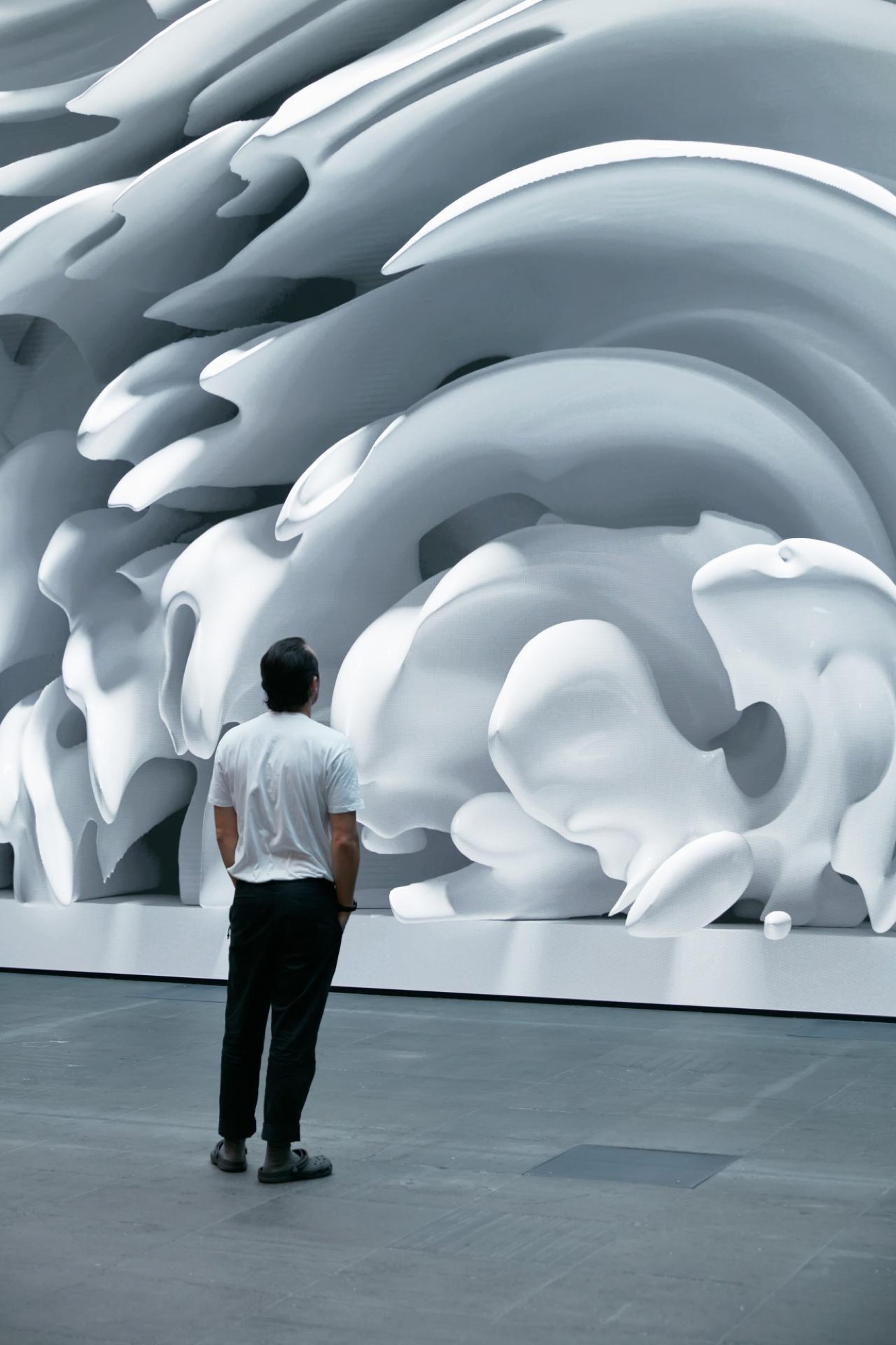
Again on the NGV website, Anadol talks like all artists do these days—as if they’re unveiling the cure for cancer at a TED Talk. His yoga-droning spiel is peppered with enunciated scare quotes typical of futurologist hustlers: “if”, “maybe”, “near-future”, “perhaps”. I hope the NGV conservators are taking note, because they’ll be the ones saddled with storing, archiving and cataloguing this data-contrived tech-dinosaur. Anadol also lets slip that his “team” engages Google’s AI Quantum Team in a moment of reverse-transparency (i.e., declaring the limits on your proclamation of limitless freedom and access to “data”). He describes the work’s employ of quantum computation via quantum physics theory “to speculate a machine in the near future” being able to “create an alternate nature”. Further, that this machine would have “a mind, and this mind itself can speculate a universe of nature based on what it learns from humanity”.
Dude. Go home. It’s just a customised particle diffusion effects program run with some co-opted and redirected data input for simulative control. And there’s nada connection or relevance between your ILM Tinkerbell dust sprinkled in ultra-hi-res and your claims to visualising “all the images of nature in the world”. Big budget advertising has been using these billowing, wispy, volcanic, bubbling, liquefied animated effects ever since Roland Emmerich smeared post-9/11 digi-destruction over hand-wringing spectacles like The Day After Tomorrow (2004) and 2012 (2010) (to pinpoint just two markers in the ongoing design of the dematerialising spectacularism that has propelled CGI imagineering in the twenty-first century.) Advertising ported these software procedures into sexy bridesmaids getting covered with champagne bubbles; footballers rising into the air on flaming sprays; fizzy drinks exploding over children drenched in sparkling sunlight; fashionista models insolently pouting while dressed in multi-coloured puffs from a Holli festival. (For embarrassing empirical proof of the LCD saturation of this effect, check out the ID to ABC’s Art Works—ground zero of moronic uptake of visuality for the proudly anti-intellectual demographic of Australia’s art industries.)
Let’s dumb it down further. I could take every photo everyone has posted of a flower on SMPs, print them out and shred them into confetti, then have underpaid workers sort them into colour codes, position them in patterns, scan each positioning into a moving sequence, then stitch the sequences together into a seamless animation. Très analogue. I’ll dumb it even further. Instead of flowers, I could instead use the hair colour of each woman posting a flower photo, plus the colours of her daughter’s favourite toy and the colours of her grandmother’s quilt and carry on with the above-mentioned image-processing. Flip it: thanks to the amazing visionary work done by our guild of Silicone Valley imagineerists, I can just pay a hefty software license to do all this. I can then sell this on to anyone who would be impressed by it—and none are more easily impressed than museum professionals taking a dip into the swamp of screen culture. Their limited perception functions as a device to block legacy narratives, morphological history and semiotic connectivity, and prevent positioning an artwork within extant and external technological developments in visuality.
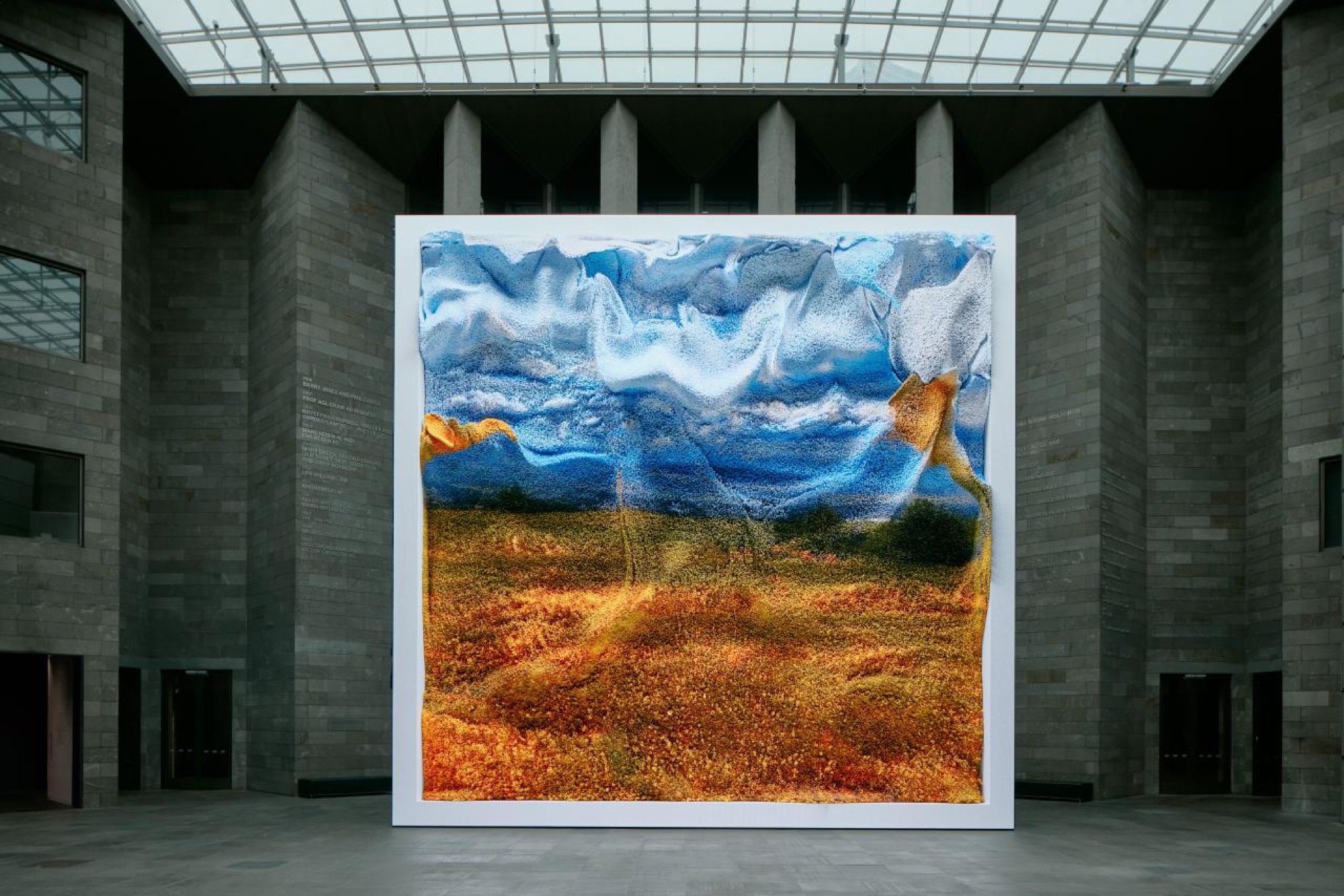
So I’ll help them out there. The astounding spatial violence of Quantum Memories’ installation in the NGV forecourt accords with Melbourne’s endless architectural excretion of intimidating forms designed to arrest visual engagement while boasting associative branding through the act of commissioning (Melbourne Exhibition Centre, Federation Square, AAMI Park, etc.). Like a bald goateed tech-dad driving a Tesla with a custom number plate, commissions often declare their monetary back-story. Quantum Memories—more so than Jeff Koon’s Venus (2016–20)—makes a statement of occupancy within the NGV’s architectural diegesis. It’s as contemporaneous as it is vulgar, synching to how all international pavilions compete with whatever tactics are at their current disposal (bombast, confrontation, passive-aggression, guilt, bravado, cuteness, wonder, sharing, empathy, etc.). What is not pointed out is that screen-based artworks now have to intensify their competitive edge because people actively don’t watch screens. Like music and noise, the ambient mediarised environment is so full of competing effects one is continually forced to filter, suppress, discount and ignore the barrage of audiovisual information interrupting any simple IRL movement. The NGV install declares: I know you want to pass this by, but you simply must look at it.
Poor NGV. Such has always been its fate. A retro Modernist bunker still believing it’s an important cultural attractant, clinging to Impressionism while marketing the Contemporary. Walking within its mutated passageways (Colonialism meets High Point via 70s churches with Friday night DJs) I always feel like I’m in a high school group booking, being forced to look at stuff and think about it, while being filmed for a clip on ABC-TV. The energy I have to utilise to filter out all of this just to try and consider a single artwork can be debilitating. Could this be why such a low level of critical discourse hangs around the screen culture swamp? Are museums engaged in a battle against visuality in order to provide art as succour and edification? Yes—their mission statements might declare as such. But if these institutions—nix that: if the professionals within these institutions are drowning in the greater screenic world within which Art floats, what of their capacity to navigate these amoebic realms of visuality? To my eye—averting the bright beams of curatorial and artistic statement—Quantum Memories is merely an updating of the NGV’s installation of Deborah Halpern’s Angel (1988), an NGV commission in collaboration with the Australian Bicentennial Authority. Ugh—the 80s in Melbourne. A non-stop deluge of ossified highbrow entities “going Pop”. Sir Roy Grounds passed away in 1981 and didn’t live to see Angel deposited into the moat like a petrified Moomba float produced for a children’s community art project. Moats, fountains, pools, troughs, the Yarra: their history in post-war Melbourne is one of drunks urinating in them. Angel appeared like a goofy mascot deferring to Saint Mirka Mora and urging us to not piss where we view art.
Quantum Memories is like tamed Technicolor urine splashing everywhere without anyone getting wet. The erotics of its exploding pustulation (let’s call it tie-dye cum-shots) grant virtual visceral thrills to hordes of Instagrammers without the negative publicity the NGV attracted in 1997 when it briefly exhibited Andres Serrano’s Piss Christ (1987). Virtual visceral. That’s as good a combine as any for describing how these mega screen-based artworks perform. Quantum Memories doesn’t smell of urine, but it evokes a pheromonal response. If you look at most still images of the work, they resemble a box viewed from above. It’s like looking into a hysterically feminine girly-girl’s Ikea drawer where she keeps all her diaphanous perfumed scarves to drape over her bedroom lamps and soften the visual ambience. And they’ve come to life like balletic labial folds of fairy princesses dancing in space. This is NGV Impressionism with a ketamine spike, transfiguring flower photos into essential oils, swirling around as candied ectoplasm to enliven the senses.
Not too long after I saw Quantum Memories at the NGV, a tram passed me on Swanston Street covered in the logistic branding for a new fragrance by cricketer Shane Warne. Being the eau de toilette of a professional sportsman who used banned diuretics, I wondered if it smells like sweet urine? Its dicraptic text could easily reside on the NGV website:
The woody and boldly intense fragrance exudes sophistication, sensuality and warmth with sumptuous ingredients that envelop the senses. Opening with notes of fresh bergamot, mandarin leaf, cardamom and crisp apple, the scent transcends, develops and intensifies with mild notes of juniper berry, lavandin, clary sage and wild mint before finishing with bold base notes of Indonesian patchouli, birch wood, oak moss and leather accord. The refined yet bold bottle showcases the style of Shane himself, featuring a sleek black body adorned with silver accents—the perfect addition to any men’s fragrance collection.
Philip Brophy writes on art among other things.
